Tankless vs Tank vs HPWH – 10 Year Costs Estimates – Large Custom Home

Heating and cooling may account for the two greatest utility loads in our homes, but water heating is not far behind in third. As a builder who cares about the efficiency & reliability of our buildings, we find ourselves consistently having conversations about which water heating units are the best fit for our client’s needs. There is certainly not one end-all-be-all answer and there are plenty of variables to take into consideration when choosing what unit and system is right for you or your client. Considering the spectrum of options on the market today, we’d like to take advantage of one of our current projects as a case study.
If you’ve been following this blog or my YouTube channel you’ve seen that we’ve reviewed and posted about a Rheem HP-50 Hybrid Heat Pump (and an AirTap ATI 66), a Vertex High Efficiency Gas Condensing unit and a Rinnai Tankless unit. We’ve liked and used each of these types of water heaters for different reasons and in different contexts and are continuing to learn not only how well these operate over time, but how well they are meeting the specific needs of the residents they serve.
For this case study, the same three types mentioned above play a role (scroll to the end if you just want a numbers comparison of our three unit choices), starting with three(3!) Rinnai RU98i Tankless units currently slated for the project. To set the stage better we have a 7,000 square foot custom home for a family of 5 (2 Adults, 3 Teens), with the original intent behind the 3 tankless units being to keep the runs from unit to end user as short as possible and serve 3 zones – 1. Master Bath/Bed 2. Kitchen/Laundry/Bathroom and 3. the kid’s bathrooms. Although these are great units, with much to like, we decided to do a little research and look into other water heating options that we could then present to the client. Our main concern in initiating the research into alternative water options had to do with one particular obstacle with the tankless units – Maintenance.
The first maintenance obstacle we are predicting for these tankless units has to do with the hard water here in Austin. These units are supposed to require service once every 12-18 or so months, but we’ve found this is too lenient for our water here and that service is definitely necessary every 12 months. Our experience is showing that the tankless boilers can have scale build up at a relatively rapid pace, and subsequently effect or clog a thermostatic valve cartridge or other filters found at fixture locations. The 199,000 Btu burners on these units are no doubt impressive at only 1,000 Btu under commercial boiler grade, but the high heat in combination with the amount of surface area and small diameter of the copper piping relative to a traditional ‘boiler pot’ of a tank heater, contribute to this unfortunate scale build up. That said we have seen but have yet to use or test the Rinnai scale control system (basically a mini water softener).

The second maintenance obstacle is of a different nature and comes out of a concern for resident privacy. Each of the three units is located on the interior of the residence within tricky, tight closet space, one of which is in the master bedroom. In order to service and flush these units you need about a five-gallon bucket of an industrial strength vinegar cleaner, a sump pump and the usual basic tools etc. This presents a cleanliness issue, with the potential for overspray, leakage and so forth, but more importantly an invasion of the most intimate and private space in the house – which makes us uncomfortable and most likely the resident too.We’ve seen that these units are excellent choices in certain contexts and although they are a good choice for this residence from the perspective of efficiently, meeting the high hot water demand, effective piping/zoning design and maximizing interior space; we think there are two alternatives that will allow us to avoid our maintenance concern and still meet the needs of the residents.
CURRENT PLAN
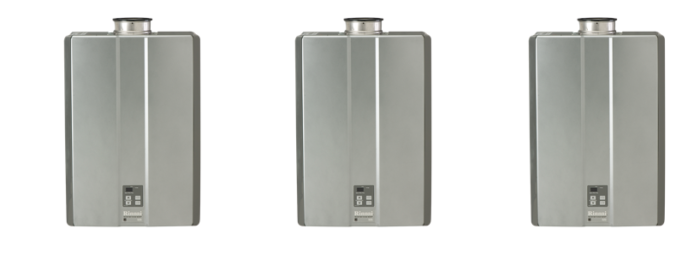
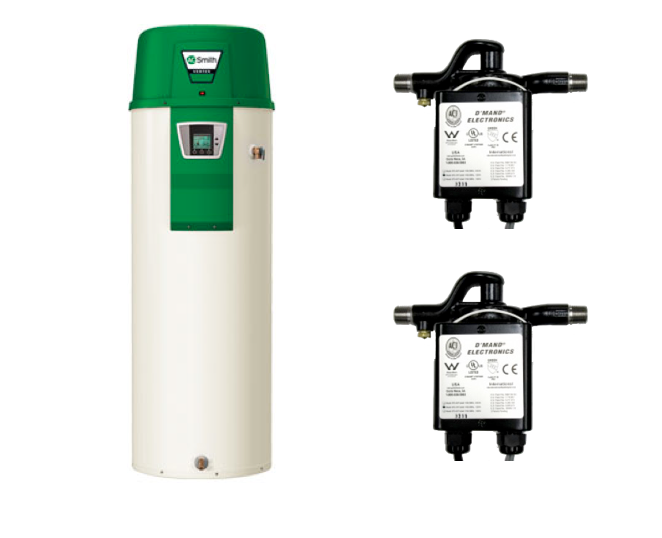
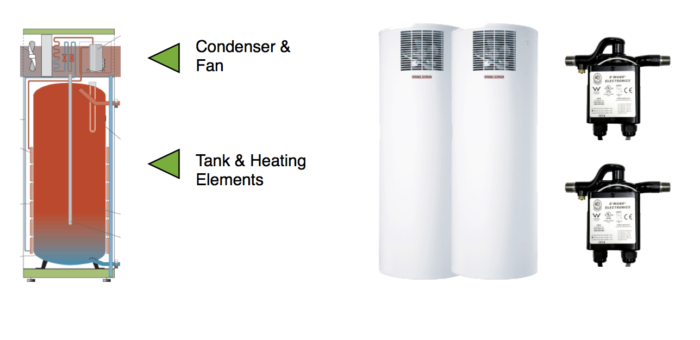
In both alternative A or B, the water heating units would be placed in the garage storage room, which immediately presents a different set of concerns as we lose the efficiency that came with the proximity of multiple tankless units throughout the house. The layout of hot-water piping can be an oft overlooked factor in gaining the most out of your heating units. Gary Klein has written a great article on just this subject in the March 2013 issue of JLC and it is well worth a read as we won’t get into the details here. That said, our primary concern by proposing tank units located in the garage was time-to-tap, standby heat loss and water waste given that the distance to the kitchen and master bathroom (the two anticipated high demand locations) are 80 and 170 feet respectively from the unit(s). We’ve used Metlund D’mand Pumps (link to youtube video) on other projects and we think they’d be a great solution at each of the aforementioned locations. For anyone who may not be as familiar with these, they are referred to as ‘recirculation’ pumps, but we refer to them as recharging pumps. Placed at the desired fixture points, the pumps discharge the cold or cooled water from the pipes back to the water heater, meanwhile charging the system with hot water, all via the push of a button, or in the case of our master bathroom, a motion sensor. The pumps run (very quietly) for a few seconds and shut off automatically when the pump senses the water is hot. Although these pumps will add an additional cost, they are vital in such long branch runs if you want fast hot water and not waste water down the drain waiting on hot.
But let’s get to the good stuff – the two alternative water heating units. Why did we pick these two?
- Lowest up-front cost of the three proposed units, with 1 tank being plenty sufficient to do the job (keep in mind that your average house of this size would have 2-3 water heaters)
- Only requires inexpensive PVC venting for intake and exhaust and power vented (this unit it easy to put inside the tight conditioned envelope)
- Impressive 96% thermal efficiency (compared to average of 60-75% of standard units)
- High first-hour delivery rate – 164 gallons
- Fast recovery rate – 129 (4.3 gal/min) = ability to run continuous hot water
- Simple and user-friendly LCD interface
- Single tank that can be hidden away easily
* Important to note that a condensate drain is required for these units
That’s a brief look at the Vertex, and it’s beast, that you couldn’t really go wrong with, especially if you have natural gas. That said, we don’t have natural gas for this house and we’re excited about how good of a fit the Hybrid Heat-Pump units could be.
STIEBEL ELTRON ACCELERA 300 HEAT-PUMP WATER HEATER
There’s a lot of good research and testing being done on these units and there is some great literature we’ve listed at the end of this post that we encourage you to check out if you want to get a little more in-depth understanding of the technology and performance of HPWH units. For those who might not be familiar with how this type of hot water works, they operate much in the same way as your air-conditioner or refrigerator compressor does, but instead of transferring heat away from the unit like an air conditioner, it extracts the warmth from the ambient air and transfers the heat to the water in the tank. This results in a thermal efficiency of about 250% or a 2.5 EF. Martin Holladay notes in the article listed at the end of this post that the American Council for an Energy-Efficient Economy (ACEEE) has calculated that the electric heat-pump water heater has the lowest life-cycle cost compared to other units ($4125 over 13 years – for one unit), and they are also his personal recommendation if 1. natural gas is not available and 2. you have good location to install a heat-pump water heater. (See this video I shot about the AirTap ATI66 inside a Texas House)
Let’s get the main downsides out of the way first and why we’ve decided these are outdone by the benefits and strategic planning.
- Expensive units = greater initial cost
- Slow recovery rate at 8gal/hour after first-hour delivery
- These can produce more noise than a standard unit
- Placement is critical to gain full efficiency
- need a condensate drain
These units can be used in just about any climate, but they are incredibly well-suited for our climate here in Austin. You need a minimum ambient air temperature of 42F for these units to operate but their coefficient of performance (COP) is directly tied to the air temperature. To put it in perspective, the COP at 42F is 2.0, but can increases to an impressive 7.0 at 108F.
With Austin’s 2012 annual average air temperature at 71.7F, and by locating it in the unconditioned garage space we should have no problem getting a very high efficiency from this sort of unit year round. One of the best side benefits of these units is the production of cool air and dehumidification. This can be beneficial in an interior space, but also in a space such as the garage, (especially if there is workshop space allotted) which can often become a hot-box in our climate. The temperature factor, when combined with the sound level and the need for this particular to be placed in an area with 500 cubic feet of air space, makes the garage an excellent location for this unit.
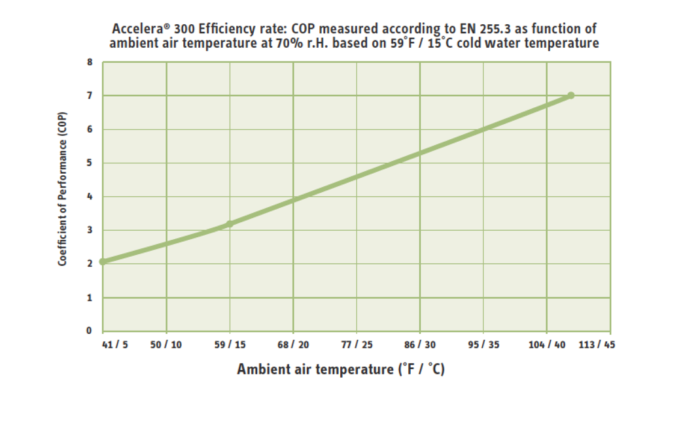
Although this system has an up-front cost not far behind the original tankless proposal, the operational costs over a ten year period are almost half according to our estimates, and the efficiency is by far the highest. The electricity costs for the Heat-Pump units is somewhat hard to anticipate on existing available data, but the important factor is that we are wanting/needing to run the tanks in High Efficiency mode only. As you can see in the chart below, the playing field levels out in terms of long-term cost for the Vertex and the Heat-Pump options over a 10yr period.
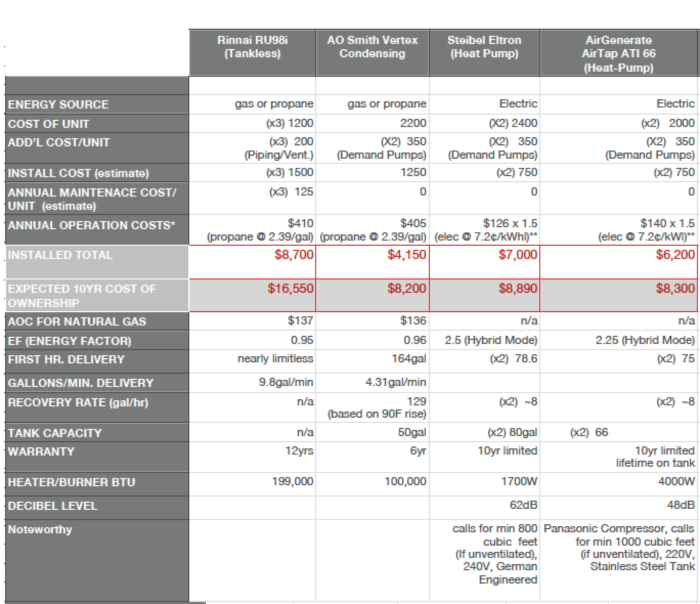
SO, WHAT’S IT GONNA BE?
Our recommendation is definitely not the Tankless at this point. Concern over the maintenance combined with the projected long-term cost make it no-brainer for us to narrow it down to the other two options. The Heat-Pump option edges out the Vertex for us despite the comparable 10yr cost comparison. What sells us on the Heat-Pump over the Vertex is namely: 1. The potential to cool the garage to a very temperate level solely with this unit (it should deliver about a ton of cooling) and 2. The future possibility of tying the unit into solar options, which creates greater potential for a net-zero home. So, even though the Heat-Pump option requires two units, which means more space, and occupation of open space, we like the additional side-benefits enough to try and make a case for it. That said, our second recommendation, the Vertex is probably what will be installed, and we do not see this as ‘settling’ by any means. Propane is already being used in the house and so it makes a lot of sense to go this direction. The Vertex is super efficient and provides a nearly limitless supply of hot water and a smaller foot print for the tank, which can also be hidden away easily in the garage.
-Matt Risinger
Risinger Homes in Austin, TX
Fine Homebuilding Recommended Products
Fine Homebuilding receives a commission for items purchased through links on this site, including Amazon Associates and other affiliate advertising programs.
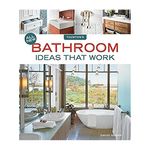
All New Bathroom Ideas that Work
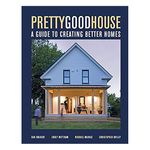
Pretty Good House

Homebody: A Guide to Creating Spaces You Never Want to Leave










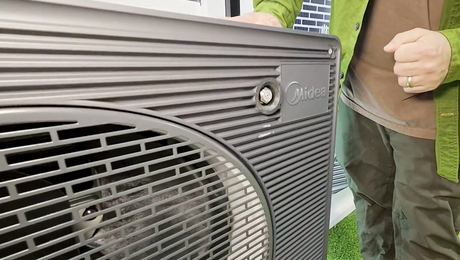
















View Comments
Really? Somehow you could figure out how to run the entire house off one 50gal water heater but you needed three tankless heaters to do the same job, 199,000BTU models at that? You're comparing a 4.3gal/min recovery rate (at what ∆T?) to 16.2gal/min (70°F ∆T) with the Rinnai units?
You could have done the same recirculation design with one or two tankless units (one would be 5.4gal/min, two units would be 9.8 gal/min output at a 70°F ∆T) utilizing a small storage tank with the demand pumps for the longer runs and allowing the units to be located in the same garage area (also alleviating the "privacy" concerns for the annual service). The install cost would have been lower, the annual service cost would have been lower, and the annual operating cost lower as well. It seems like very little thought was put into designing the tankless option, while lots of thought went into designing the other options.
Also, it seems something of a fantasy to believe that hard water is going to require annual service for the tankless units but zero service for the others. I've seen tanks go south after only 5 years service due to scale build up that wasn't cleaned. Install the water conditioner, or service the units when they need servicing (the RU98 has a scale detection sensor, for what it's worth).
I'm going through the same calculations as I start the rebuild of my fire damaged house in Pennsylvania. With no NG available and very expensive electric -- we don't have any great options. Previously the house had a 30g oil fired unit -- great because we could turn it off and it would heat the water in 15min when we returned - weekend house. Expensive electric is not all that much more than expensive propane when you factor in the cost of the propane unit over a basic electric unit - plus any potential problems or shortened life of the propane unit. Oil is out - the tank is a problem and the servicing of the units every year is more. And the HP units suffer in the winter temps.
The on demand units are fine for one location -- but when one unit has to supply many areas the wait is just too long and the changing water temps throughout the year with well water is a problem -- plus, with a septic system the wasted water can also be a problem. Adding tanks to them just adds to the complexity.
So it come down to ... do I keep it simple and get a high end electric unit with plenty of insulation or get the more expensive propane unit and pray it lasts.
I pay about $35 dollars for hot water in a house with natural gas (summer gas bills are $45 with NG stove and dryer-- my neighbor with electric pays about 75 (his estimate) --- the propane unit is going to take a long time to pay for itself -- something like 10 years.
I was also thinking about maybe a Polaris unit as I could use if for some strategic radiant in the baths and kitchen -- but they have drawbacks also.
@yeltdogt: If your house is truly a weekend house and you are only using it 4-6 days a month then you are probably best served with an inexpensive electric tank heater. I would put a switch on a prominent wall then flip it on when you arrive, and off when you leave. Your payback on anything else is really not there. The only reason to go Propane Tank would be to use it for supplemental heat, OR because of high demand with multiple guest and a full house. I've got an Architect friend who loves the Polaris for running to a Hydronic furnace as a heat source. You could potentially do that with the 100k BTU AO Smith Vertex too. They have taps on the side of the tank for this purpose. I would keep it simple and use an electric tank if it were me. When/if you move there full time you can switch to another more efficient option. Best, Matt
@cornwalker: Good points. I agree that 2 tankless units could have been utilized in the garage but that eliminated the benefits on short runs. In my experience the 199k BTU burners on Tankless units require annual flushes for areas of hard water. I realize there are many other options, but I wanted to give some thought to how a large house would be serviced with these three choices. Thanks for commenting. Matt
Regardless of the style, model or brand of water heater, soft water is a must. The same can be said of plumbing fixtures in general but now tankless, tank or heat pump water heater has a chance with hardess above 7 grains or so.
It is silly to propose or even consider such an application.